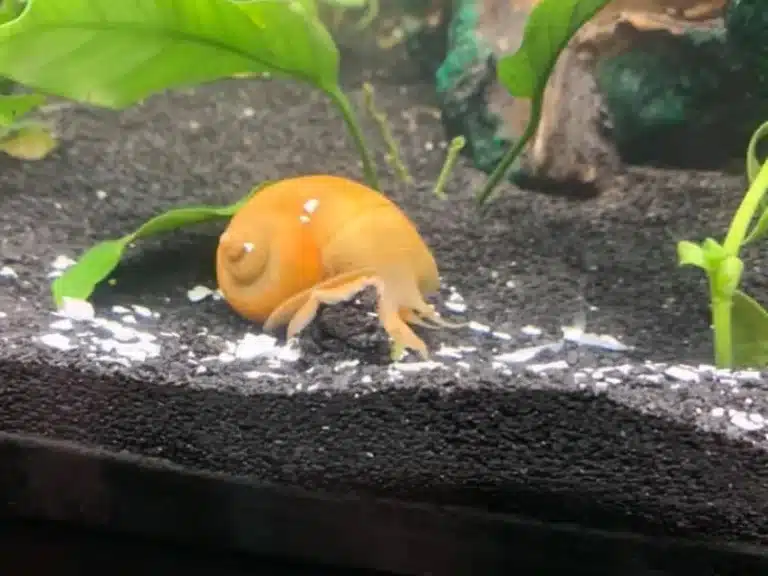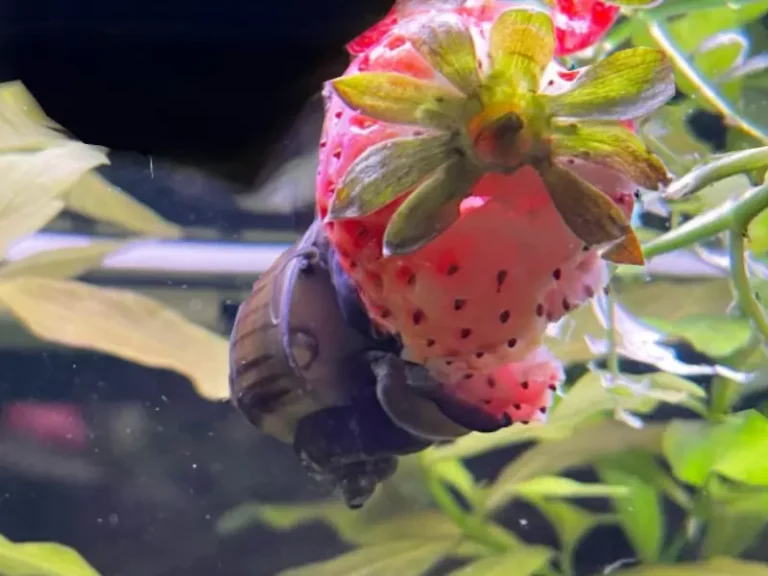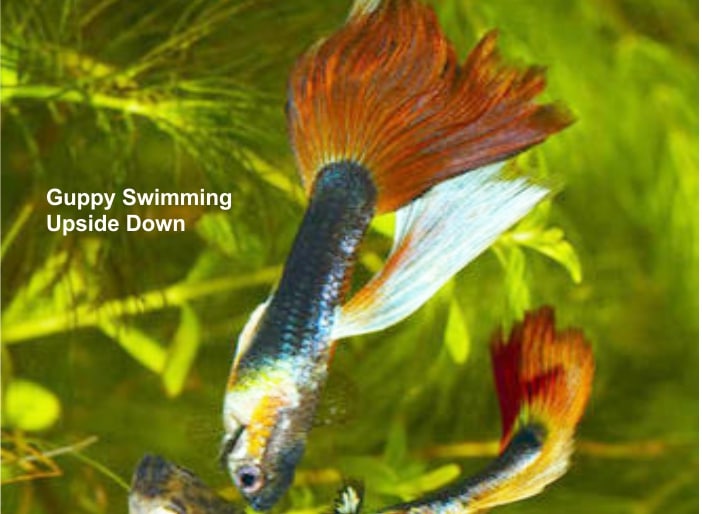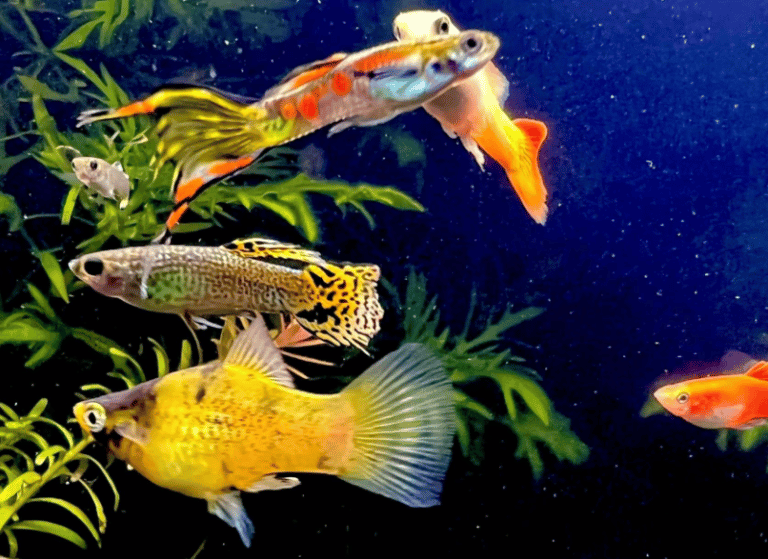The flame tetra (Hyphessobrycon flammeus), also known as Von Rio tetra or red tetra, is a freshwater fish from the Characidae family comprising the popular neon, emperor, and rainbow tetra. It originates in the Southeast region of Brazil, where they live in shallow rivers and streams.
While this fish is bred in captivity mainly for the aquarium trade, their population in the wild has declined due to the destruction of their natural habitat, pollution, and the introduction of invasive species like tilapia.
Flame tetras are therefore listed as endangered in the Brazilian national red list. This means they are among the species facing an extremely high risk of extension in the wild.
Flame tetras are a great addition to any aquarium; they are peaceful, hardy, vibrant, colorful, and relatively easy to care for. Since they are schooling fish, keeping them in a group of at least six individuals makes them feel comfortable and secure.
In summary, here is what to know about the flame tetra fish.
| Scientific name | Hyphessobrycon flammeus |
| Lifespan | Averagely 4 to 5 years |
| Temperament | Peaceful |
| Diet | Omnivorous |
| Water temperature | 22 to 28 °C (72–82 °F) |
| Water hardiness | 3 to 15 dGH |
| Water pH | 5.5 to 7.5 |
| Care | Easy to medium |
| Tank size | At least 15 gallons for 6 fish |
What’s in the Article

Description and features of Von Rio Tetra
Before we delve deeper into care and tank requirements for the flame tetras, let’s look at what this fish looks like, its size, behavior, and average lifespan.
Appearance
As its name suggests, flame tetra has a bright red-orange coloration on the rear part of the body and silvery-white in its front area. All its fins have a hint of red except for the pectoral fins, which are translucent. The transition of colors is natural, creating a flame-like aspect of their appearance.
However, you need a close examination to tell the difference between male and female flame tetras. Males are more vivid in coloration and tend to turn bright red. Additionally, the tip of their anal fin is black.
On the other hand, female flame tetras have less red coloration, and their pectoral fins commonly have black tips.
Size
With the right care, the flame tetra fish can grow to around 2.5 cm (1 inch) in length. They have slender, streamlined body shapes. However, females have slightly larger, rounded bodies, especially when they are about to spawn.
Lifespan
The average lifespan of flame tetras in captivity is around 3-5 years. However, with proper care, feeding, and a healthy environment, they can live up to 7 years or even longer. Their breeding age begins at 8 to 12 months, where females spawn as many eggs as 500.
Behavior
Flame tetras are calm, peaceful, and easy to interact with other fish species. They are schooling fish, and keeping them in a group of six or seven makes them feel safe and comfortable.
How to care for the flame tetra fish
If you decide to add flame tetra to your aquarium, it’s important to provide them with proper care in line with their optimum growth conditions. This should include a safe and comfortable aquarium environment, a balanced diet, and a proper disease response.
Here are important things to consider regarding care:
Tank Size
Choosing the right tank size is the first step in providing great care for the tetras. While they are small in size, you need to provide enough space where they can move freely as they interact with their tank mates. Keep 6 flame tetras per 15-gallon tank or larger.
The tank should be dimly lit and decorated with live or artificial plants. Driftwood, twisting roots, and plenty of hiding places recreate the natural habitats for tetras, making them feel comfortable. Don’t forget to add a fine sand substrate and a suitable filtration system.
Lighting
Flame tetras are uncomfortable in bright light, they prefer when the tank is dimly lit. You can use an LED light for their tank to show off their colors but its important to use a timer which can help to turn the light on and off.
Water parameters
Although flame tetras can handle a wide range of water conditions, they are more comfortable in the following parameters:
- Water temperature: 22.3 – 27.8°C (72°F to 82°F).
- Water pH levels: 5.5 – 7.5.
- Water hardness: 3 – 15 dGH.
Sudden changes in the above-recommended parameters can stress or kill the fish. Therefore you need to keep testing the water for necessary amendments. You may need to use a heater to maintain the temperature in the recommended range.
Further, changing 10-20% of the water every two weeks is recommended to maintain the water quality and keep the tank clean. Gravel cleaning and filter maintenance should also be done regularly.
Food and Diet
Flame tetras are omnivorous; in the wild, they eat insects, crustaceans, and plant matter. To keep them healthy and happy in the aquarium, feed them quality flake and pellet foods supplemented with treats of live or frozen foods like bloodworms, brine shrimp, or mosquito larvae.
It’s important not to overfeed your fish as this can lead to health problems such as obesity and poor water quality. Feed small amounts of food 2-3 times daily, and remove any uneaten food after a few minutes to prevent it from decaying in the tank.
Tankmates
Flame tetras are peaceful fish that can get along with any tankmate, including mystery snails, shrimp and less aggressive fish like mollies, guppies, and neon tetras. However, their small size makes them a target, particularly when kept with larger tank mates.
Breeding
Flame tetras attain breeding age quite early in their life. Females can reproduce at 6 to 8 months, and males at 8 to 12 months. In the right conditions, the female spawns hundreds of eggs into the water, and within 24 to 48 hours, the eggs hatch into pretty hardy fry.
For a successful breeding, you must create a spawning tank of about 10 to 15 gallons. Increase the temperature to 80°F (26.7 °C) and keep the pH neutral or slightly acidic. Eggs need something to attach to, so add some grassy plants like java moss.
Once the tank is set, introduce a female to the tank, preferably in the afternoon, and later add a male about an hour into darkness. Once the two fish are stimulated, the female will probably spawn between 200 and 500 eggs the following morning.
Eggs are tiny but can be seen if you carefully check the tank. They appear like tiny pieces of glass. It takes some time time for their color to show.
Flame tetras don’t have parenting instincts, and the male might eat the eggs. So, remove the parent fish from the breeding tank as soon as the eggs are spawn. Fortunately, the eggs hatch in a short period of time, 24 to 48 hours.
The flame tetra fry gets active in just few days after hatching. Start feeding them infusoria and green water as soon as they move around. You can introduce them to baby brine shrimp, flakes, and pellets as they grow.
Diseases and Problems
Flame tetras are generally not prone to many diseases if provided with good care. However, like other fish, they can be susceptible to various diseases that may cause health problems. Common issues to watch include the following:
- Itch: This is a contagious parasitic disease that causes white spots on the fish’s body, fins, and gills. Symptoms of itch include fish scratching against objects, loss of appetite, and lethargy.
- Fin Rot: This is a bacterial disease in fish commonly caused by poor water quality or injury from nipping or hitting against an object. Signs of fin rot include frayed or rotting fins, lethargy, and loss of appetite.
- Dropsy: This is a buildup of fluid in the body of a fish due to underlying infections or liver dysfunction causing it to appear bloated.
- Swim Bladder Disorder: This is an infection of the swim bladder, which causes the fish to lose control of their buoyancy. Symptoms include fish swimming upside down, floating, or sinking to the bottom of the tank.
The Massachusetts Institute of Technology explains that most sick fish won’t easily heal, but they have tips for curing common fish diseases.
To prevent issues and health problems, it is important to maintain good water quality by regularly testing the water parameters and performing water changes as necessary. Avoid overcrowding the tank or overfeeding.
New fish should be quarantined before adding them to the main tank to prevent the spread of diseases. Fish that appears unwell should also be isolated into a hospital tank for appropriate treatment.
FAQs
How do you tell if a flame tetra is a male or female?
Male red tetras have black anal fin tips and they are vividly brighter. The fins on the females have less red colouration but their pectoral fins have darker tips. Additionally, the females will appear slightly larger and rounded when they are about to spawn.
How do you know when a flame tetra is happy?
A happy flame tetra will swim freely and energetically in the tank. Further, they respond actively when you interact with them or feeding them. This indicates that all the conditions in the tank are satisfying and your fish is healthy.
What does a stressed flame tetra look like?
A stressed Von Rio tetra will develop odd swimming patterns including lying on the bottom of the tank, rubbing against objects like rocks and gasping up at the surface. In severe cases, the fish becomes lethargic and stop eating.
How do you calm down a stressed fish?
Test the water parameters and adjust as needed. You may also change the water to keep nitrate and ammonia levels low. Clean the filtration system and make sure it’s working. You’d also check if there is an agressive tankmate and move it to a separate tank.
Final Thoughts
Flame tetra fish are generally easy to care for, making them popular among aquarium enthusiasts. They are hardy fish that can adapt to various water conditions.
However, like other aquarium fish, certain care requirements must be met to keep them healthy and happy.
They require a tank with adequate space with a well-maintained filtration system to keep the water clean and quality. They also prefer to live in groups, so keeping them in groups of six or seven is recommended. You may also keep them with less aggressive tank mates.
In terms of diet, flame tetras are omnivores and will eat different types of foods, including flakes, pellets, and frozen or live foods. Further, provide them with a balanced diet but do not overfeed them, which can lead to health complications.
References:
Redescription of Hyphessobrycon flammeus Myers, 1924, a threatened species from Brazil by Fernando R. Carvalho1,2, Guilherme C. de Jesus1, and Francisco Langeani1.
Catalog of type specimens of Recent fishes in the National Museum of Natural History, Smithsonian Institution.
Brazilian national red list of endangered species, Ministry of Environment and Climate Change





